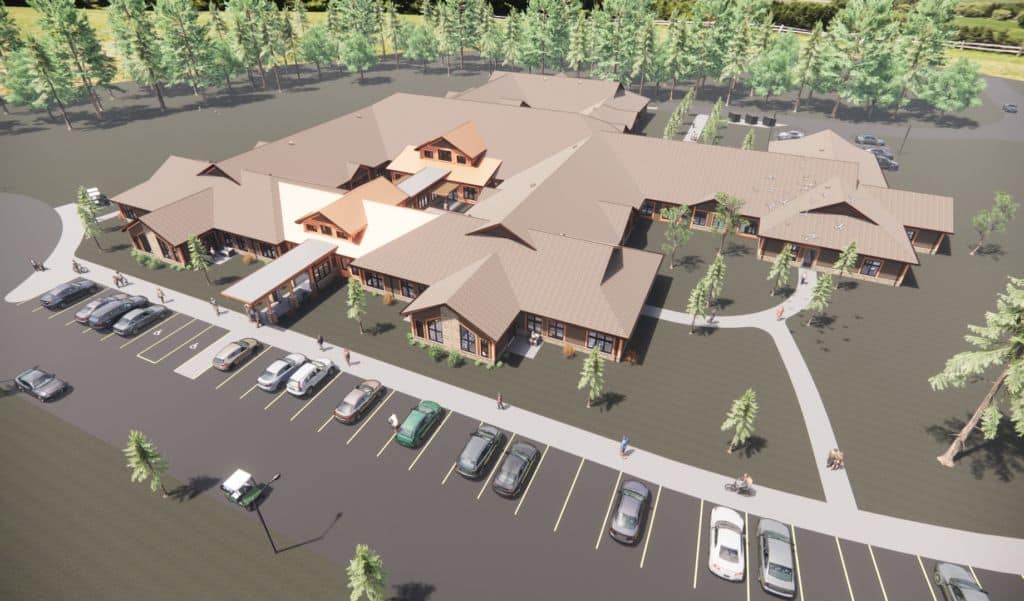Riverwood Senior Living Design Project Qualifies for $1.6 Million PACE Wisconsin Loan
Tuesday, April 7, 2020
Program helps facility provide resident-centric amenities
For Community Living Solutions, senior living design starts with a belief that as architects, we owe a responsibility to the environment and to our clients to design buildings that are sustainable. For Riverwood Eagle’s Nest LLC, that belief helped its investors reap great rewards. The Wisconsin Dells-based developer qualified for a $1.6 million Property Assessed Clean Energy (PACE) Wisconsin Program loan that is helping them provide energy savings and resident-centric amenities that will boost the facility’s marketability. It’s the first senior living project in Wisconsin to use PACE Wisconsin funds.
What is a commercial PACE loan?
Commercial PACE Wisconsin programs allow property owners to finance energy improvements and pay back the costs over a specified period of time through assessments. While PACE is a federal program, every state must adopt legislation that allows for its use. In Wisconsin, the application is limited to commercial property owners. The county where the property is located also must pass a resolution to make PACE projects allowable. Riverwood and Columbia County worked in partnership to enable the economic incentive to be used on the project.
In order to qualify for the program loan, a certified third-party energy consultant analyzed Community Living Solutions’ design plans and specifications. Using modeling software, the consultant was able to tell Riverwood’s investors how much they can expect in energy savings over the life of the facility. The expected savings then equals the qualified loan amount—for Riverwood, $1.6 million.
Energy-efficient senior living design
Community Living Solutions didn’t design the building in an attempt to match a PACE loan goal. Sustainability and energy efficiency is simply a hallmark of our design and building philosophy. When investors submitted our plans to see whether it would qualify, the PACE consultant identified it was 38% more energy efficient than the required code.
Building an energy-efficient facility like Riverwood costs more up front. But, as was confirmed by the PACE analysis, the benefits—and savings—last for decades. Our design included:
- Positioning the building on the site in such a way to maximize natural energy efficiencies
- Window upgrades that are more efficient than code minimums
- Minimizing air exchange by having the exhaust flow through a heat exchanger, which will capture the heat used and bring it back into the building
- Upgraded air-to-water heat pumps
- Low-flush volume toilets
- LED lighting
“At a high level, PACE allowed us to provide amenities that we wanted to use to make the facility resident-centric,” said Mary Panzer, one of the Riverwood owners .
As an example, the building will feature in-floor heating. At a more macro level, the cost savings also will allow the owners to pay employees a higher wage than they might find elsewhere, helping mitigate the challenge of finding employees in a tight labor market and promoting employee retention.
A unique project in an idyllic setting
Riverwood is being built as an intentional community, focused on wellness with a continuum of care that includes assisted living and memory care apartments, the first phase of which is scheduled to open October 2020. Future building phases may include independent living duplexes and apartments; a community commons/senior center, healthcare resource center, recreational/wellness center, conference and meeting rooms, a restaurant/social area/ice cream bar; and a hotel/spa and conference facility.
It’s all being built on a 48-acre parcel of land directly on the lower Wisconsin River in Wisconsin Dells.
“We want to service our community with an active lifestyle that promotes wellness,” Panzer said. “Today, seniors want to choose where they live. We are really concerned about safety and functionality. We want it to be aesthetically special—we want it to be a home for our residents and a place where their families want to visit. Yet, it needs to be cohesive so that when someone goes through the continuum, it is gradual and not a shocking change.”
“It really is a combination of the sweet spot between the markets served, the client’s vision, operational efficiencies and serving the needs of the community,” said CLS Chairman and Partner Terry McLaughlin, AIA, NCARB, LEED AP. “The initial vision was finding that sustainable and responsible intersection, and that’s what created this unique responsible business solution.”
The facility will be operated by Altoona, Wis.-based Grace Lutheran Communities. Grace Lutheran was brought to the table for its knowledge in running senior living facilities. Grace’s expertise was tapped immediately when CLS urged the team to consider licensing the assisted living facility as a CBRF. By doing so, the assisted living apartments can house higher acuity need residents, giving operators and investors the flexibility to serve a greater audience. The decision also maximizes the concept of aging in place.
Facility reflects current senior living trends
Riverwood’s vision taps growing trends in senior living—providing care through what is essentially a small community that features hospitality components and amenities.
“The combination of serving our markets through these trends along with the funding and the experts at the table, made this plan work,” Panzer said. “CLS has such a depth of experience. They’ve tried many things—they guided us toward the right choices and away from the wrong ones.”
If you are interested in learning more about our energy-efficient senior living designs that could save you money and help the environment over the long term, contact us or call 920-969-9344 for a free consultation.
Search Blog
Categories
Archives
- June 2025
- August 2023
- April 2023
- February 2022
- March 2021
- February 2021
- April 2020
- January 2020
- December 2019
- November 2019
- July 2019
- April 2019
- March 2019
- February 2019
- January 2019
- November 2018
- September 2018
- August 2018
- July 2018
- June 2018
- May 2018
- April 2018
- March 2018
- February 2018
- January 2018
- December 2017
- November 2017
- October 2017
- September 2017
- August 2017
- July 2017
- June 2017
- May 2017
- April 2017
- March 2017
- February 2017
- January 2017

